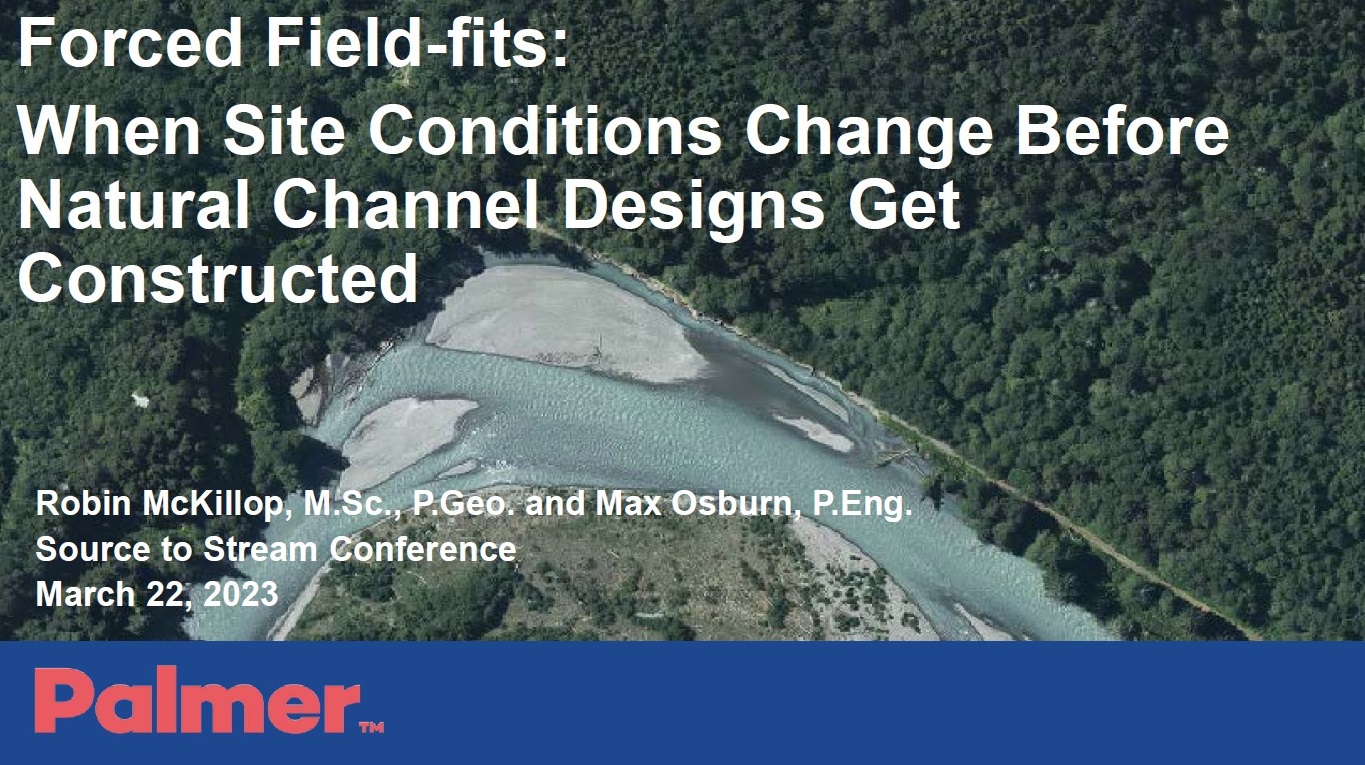TRACK 2, DAY 1
Forced Field-fits: When Site Conditions Change Before Natural Channel Designs Get Constructed
ABSTRACT
Natural channel designs (NCDs) are commonly required in association with habitat restoration, infrastructure protection and land development in southern Ontario. NCDs are generally developed based on site surveys, multi-disciplinary inputs and regulatory permitting, requiring months or even years to complete. Given the dynamic nature of fluvial systems, it is common for site conditions to change before NCDs get constructed.
This presentation uses several case studies to explore different design/construction responses to late-stage channel adjustments. A rip-rap step along Oshawa Creek got buried by alluvium between design/permitting and construction of erosion control for the Oshawa Landfill, forcing field-fit adjustments. Dislodgment of a logjam and an old crib-wall at a designed habitat restoration site along Patterson Creek between permitting and construction spurred a site visit with regulatory agencies (TRCA, DFO, MECP) to determine how to proceed. Significant access-related delays necessitated re-survey of an eroding slope toe along a tributary of Oshawa Creek prior to advancing the design beyond the original concept. Repeated washouts of a mine access road alongside Kitsault River, in BC, justified field-fit design of erosion control.
Lessons learned include what constitutes an acceptable field-fit refinement, how timelines affect such refinements, how to incorporate flexibility into designs, and how to adapt construction site inspections for dynamic sites.
ABOUT THE PRESENTERS

Robin McKillop, Palmer
Robin McKillop is Palmer’s Principal Geomorphologist. Robin has 20 years of experience developing innovative and practical strategies for addressing environmental challenges faced by municipalities, land developers and resource industries across Canada. Robin’s focus on applications of fluvial geomorphology in southern Ontario has greatly benefited from his complementary expertise in hillslope processes and glacial landforms.

Max Osburn, Palmer
Max Osburn leads Palmer’s Water Resources Engineering practice. Max has 10 years of experience in water resource projects in Ontario and across North America that have involved hydrologic and hydraulic modelling, floodplain modelling and mapping, geomorphic assessments, natural channel design, fish passage design, hazard evaluations, river and coastal erosion control, and scour protection.

